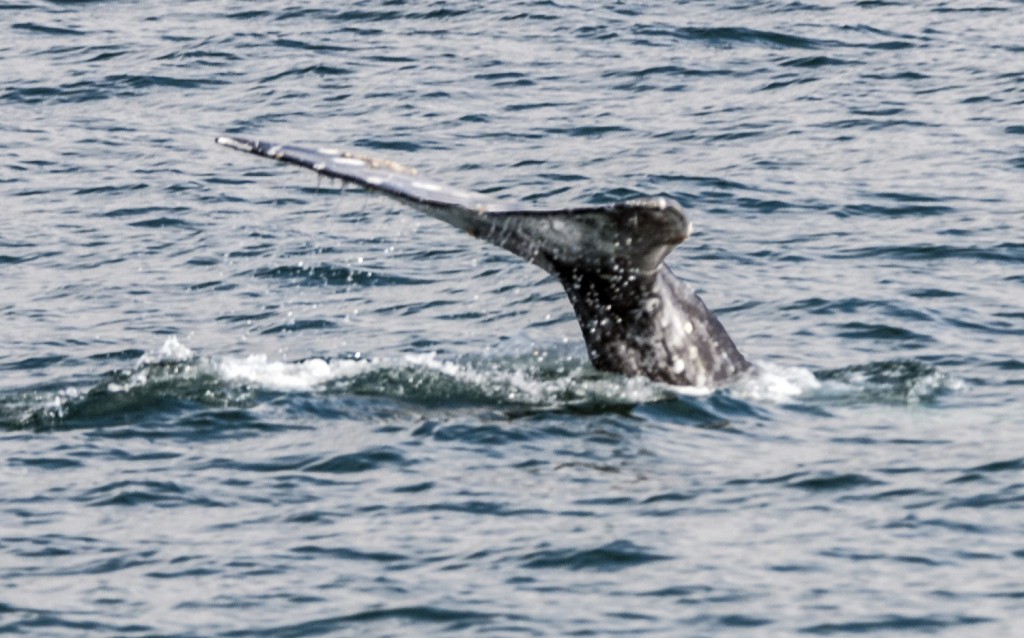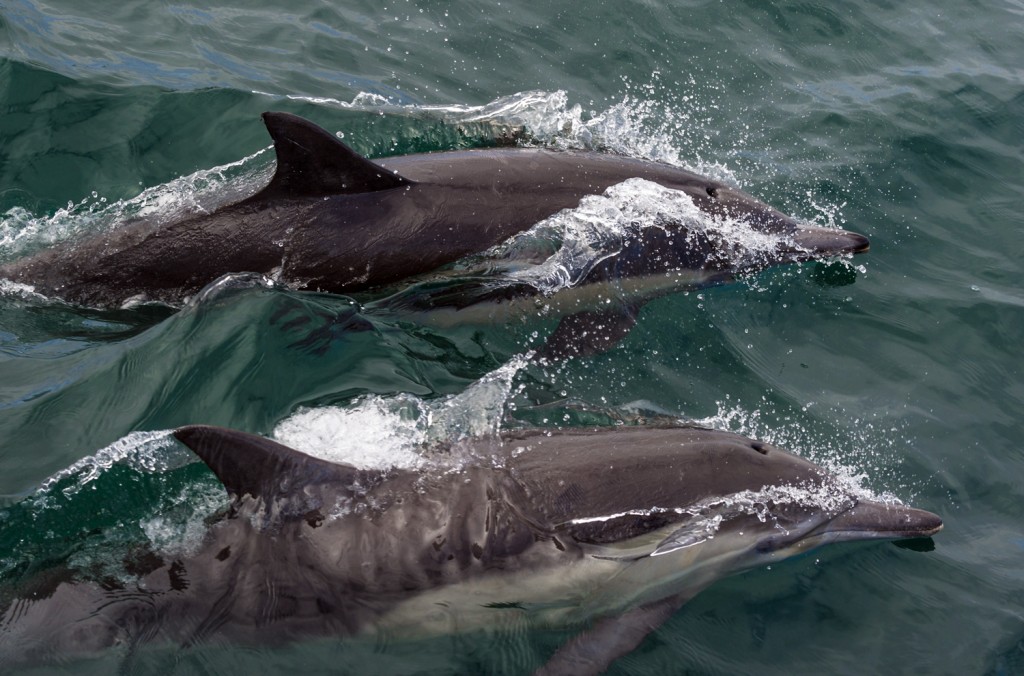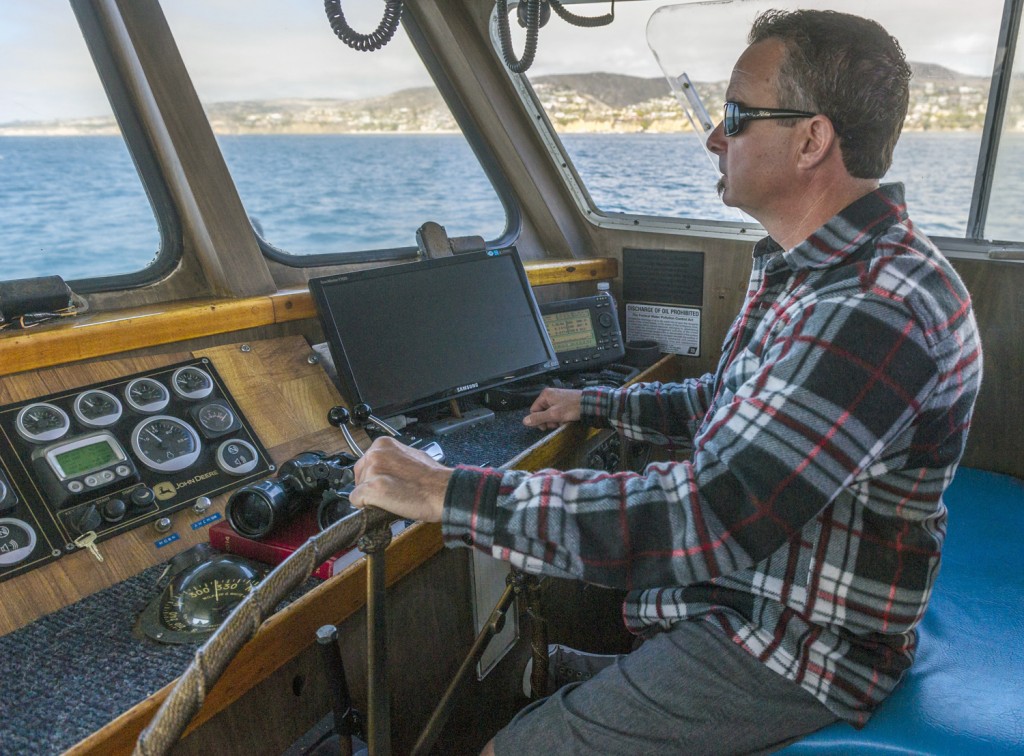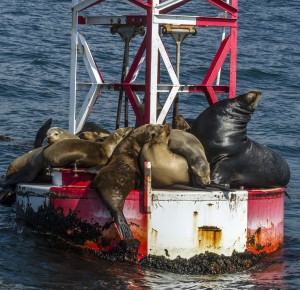
— All photos by Lawrence Sherwin
It might be a gray day.
Then, again, it could be a blue day.
It all depends on the type of whale that Capt. Rob Ellingboe spots from the bridge of the 75-foot whale watching/fishing boat “Nautilus” out of Newport Landing and Davey’s Locker at the Balboa Fun Zone.
In fact, throughout the year, a variety of whale species can be viewed cruising or hunting along the Newport coast: humpbacks, finbacks, minke, plus an occasional sperm whale, as well as Orca – the too-often media-maligned killer whale.
“When you see a pod of killer whales, they’re very impressive, very intimidating,” Ellingboe said.
What makes it even more exciting is that Orca don’t make an appearance but every three or four years, he added.

And those are the big guys. Literally thousands of their comparatively miniscule cousins cavort and hunt in our waters, including the common dolphin, the Pacific white-sided dolphin, Risso’s dolphin, and the Pacific bottlenose dolphin. These are in addition to the myriad other life forms, from basking sharks, hammerhead sharks, and thresher sharks, to seals and seal lions.
It’s the dolphins that seem to be the great entertainers on whale watching excursions as they leap, swarm and dive all around the boat with unbridled energy, often racing ahead of Nautilus to ride her bow-wave like body surfers at the Wedge.
Though spectacular in their power, grace and form, these guys are like the lesser acts before the main show.
Trouble is, there’re no guarantees that the show will go on. Whales swim and surface at their own pace, along their own course. However, they are creatures of habit: some like to proceed close to shore, while others choose a path 100 miles out to sea.
An estimated 26,000 gray whales migrate past Newport twice a year at a speed of about three to four knots, heading south from their northern feeding territory in the Chukchi and Bering Seas, then north six months later, after mating and/or giving birth in the bassinet-warm waters of Baja California.
The day that photographer Larry Sherwin and I chose to go whale watching started out chilly and overcast, with a noticeable easterly swell.

Seals were in abundance, evidence of a healthy food source near shore. Only a lucky few, lorded over by a fish-fattened bull seal that probably weighed close to half-a-ton, found sleeping quarters atop the entry buoy to Newport Harbor. The rest clustered together like rafts, their flippers thrust skyward to capture the warmer air that in turn warmed their blood.
For more than two hours, Capt. Ellingboe conducted a search pattern that covered all the cardinal compass points. Although we cruised among a dolphin pod estimated at 600, this looked like one of those rare excursion days where customers were going to go home sans sighting. But 10 minutes before returning to port, Crewman Paul Hansen spotted the telltale whale plume—and much to his credit, did not yell “Thar she blows.”
Ellingboe pushed the throttles so the 70 passengers could witness this streamlined 30 to 40 ton behemoth on its graceful journey to Baja.
Forty-three-year-old Ellingboe has studied whale habits since he started working the boats as a deckhand right out of high school; he has been skipper of the Nautilus since 1989. And so he, too, has become a creature of “habit” as he searches along the unmarked whale paths that he knows the coastal-cruising grays will take year after year. A majority of the whales spotted are usually within one mile of shore. It’s the way they navigate. Additionally, mommy whales find it easier to protect their offspring closer to the beach, Ellingboe informed.

The early cruises are generally the best time to spot whales, the skipper said. Waters are usually calm, whale spouts easier to see. Spouts are whale exhalations; and if downwind from them, or from those seals belching on the buoy, one quickly learns the definition of nautical halitosis.
Grays migrate almost without stopping, halting occasionally to roll around – perhaps to scratch their skin. After all, gray whales are infested with a greater variety of parasites and hitchhikers than any other whale: up to 300 pounds of barnacles that are “host specific.”
A gray whale barnacle will spend its entire life stuck to the skin of its host, feeding upon plankton and other foods as the whale swims merrily along. Barnacles ultimately form colonies, which appear as whitish patches, especially on the whale’s head, flippers, back and tail flukes.
Lice also call the skin “home,” dining on the skin itself, as well as damaged tissue. Once the whales reach the embracing warmth of Mexican lagoons, schools of silvery topsmelt mass around each whale to dine on both the barnacles and whale lice that crust the skin. These ravenous little “dermatologists” smooth out the skin, thereby possibly reducing drag for the whales’ 6,000-mile swim back north past Newport once again.
Davey’s Locker and Newport Landing between them operate eight boats of varying length, both for whale watching and charter fishing.
Capt. Ellingboe seeks whales three months of the year, and guides fishing tours the remaining nine – all the while keeping an eye out for the world’s largest mammals that so captivate the imaginations of just about everyone from Capt. Ahab in Herman Melville’s classic novel “Moby Dick “to the throngs of students enthralled with that classic tale.
Or is that “tail?”




